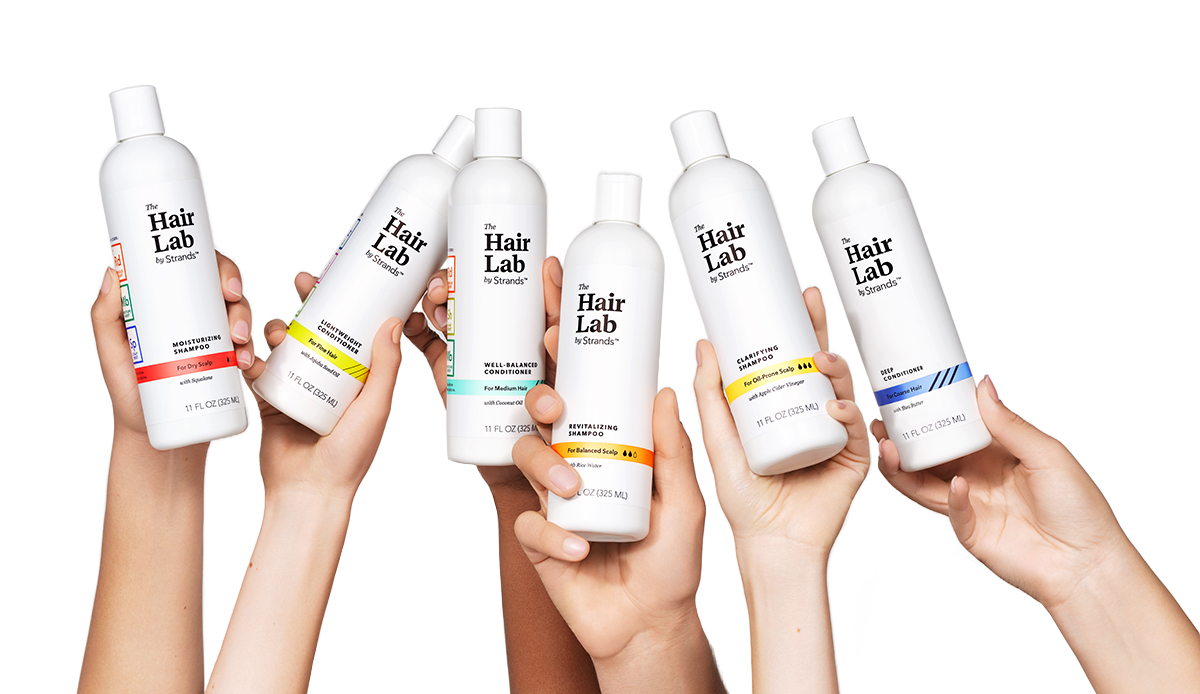
How The Hair Lab By Strands Made Haircare Customization Work At Walmart
There are countless tales of people learning from genomics company 23andMe that they aren’t who they thought they were. They might’ve had inaccurate ideas about where their ancestors came from or discovered their spouse is their cousin or the father they believed to be their biological father isn’t a blood relative. But people’s heritage and family networks aren’t the only aspects of their lives they get wrong.
At Strands, a haircare customization concept centered on a testing kit that allows it to accumulate information about protein levels, scalp sebum, texture and cuticle health, physiological hair data has proven that hair perceptions and realities often don’t converge. “Haircare has always been about guesswork,” says founder and CEO Eric Delapenha. “No one has ever entertained telling the consumer they might be wrong about what they think about their hair.”
Strands is all about using data to take the guesswork out of haircare shopping, both via its prestige products and mass-market offshoot The Hair Lab by Strands, to enable consumers to buy the right products for their actual hair, not the hair they think they have. The Hair Lab entered over 2,500 Walmart stores last year with a series of shampoos, conditioners and concern-specific boosters grounded in Strands’ science-driven knowledge of consumers’ hair and the ingredients effective for it.
But shoppers don’t need sophisticated scientific expertise to grasp Strands’ and The Hair Lab’s propositions. They only need to grasp what their products do. In TikTok videos that helped The Hair Lab’s sales multiply 2X to 3X at Walmart, a TikToker with the handle C. J. AKA CarGirl describes its products as “hair crack.” Showing off results from them to her 1.3 million TikTok followers, she gushes, “My hair looks fabulous.”
Beauty Independent talked to Delapenha about The Hair Lab’s influencer marketing strategy encapsulated in C. J. AKA CarGirl’s videos, the surprise DM Strands received from Walmart, translating the brand’s model to the massive chain, what differentiates its customization, and why beauty businesses launching at Walmart are winning investor approval.
How did you get into the beauty industry?
I’m originally from Jamaica, but spent a lot of time in the U.S. I went to boarding school starting at 13, and then I studied human biology and business at USC. I was passionate about getting into biotech. I went to a company called Fulgent, and I was in their business development team trying to sell genetic testing kits to doctors. I was very bad at it. It was hard to pitch a new technology to physicians, and I didn’t have a Ph.D.
But the organization was amazing in terms of its support for newcomers. We managed to form a team that focused on the consumer. At that time, 23andMe was skyrocketing, and they were doing a great job of educating the market. They spent a lot of money doing that, and that was a huge lesson about the level of education you need when trying to launch a new product, especially a complex consumer product.
It also taught me the power of the business model empowering customers with their own biological data that’s extremely accurate, and then using that data to drive personalized treatments. It’s a model I became obsessed with. I wanted to start my own company and apply it to different industries. One of the industries that came up was haircare.
I saw companies launching personalized products, but all based off a quiz. I tried to answer the quizzes, and I thought, let’s see if other women I know can answer the questions. They thought it was a unique model to put their names on the bottle and have their own fragrance, but, when it came to answering questions about the physiology of their hair, that was complete guesswork. They were using sight and touch.
I left Fulgent and said, alright, let’s see if we can identify and create different methods to accurately quantify the physiology of hair like the thickness of your hair fiber. A lot of the quizzes ask you to compare the thickness to a sewing thread, but it’s physically impossible to discern the differences between a sewing thread and hair. I said, let’s actually quantify that.
We have a custom platform with a digital microscope that will analyze down to the micrometre the thickness of hair. We analyze the protein levels and your cuticle integrity. That’s directly correlated to shine, split ends and breakage, and it’s how we assign ingredients in consumers’ specific formulations.
How I like to summarize this model is test, learn and customize. We test your hair, customers get to learn about their hair physiology and the impacts of formulas on their hair, and then we customize their shampoo and conditioner. We customize over 4,000 iterations of shampoo and conditioner.
We spent two years in development, and we developed our own operational capabilities in a lab in Los Angeles. We process all of the hair samples there and accumulate a massive database of hair physiology data. We do all of our formulas in-house and made to order. We introduced the digitally native brand Strands in 2020 two months after the pandemic. Shortly thereafter, Walmart came knocking.
It sounds expensive to set up what Strands does. Did you raise money to start it?
Pre-retail and pre-launch, we raised around $3.4 million from angel investors. So, there was no institutional capital. It was all through my network within biotech, and family and friends. They were very patient with us because it took a while to get to market.
How it all works at Strands is we have a test kit that we send to consumers. When you go on our website, you buy a bundle. It’s $50 for a one-time purchase and $40 if you subscribe plus free shipping. You have to activate the test kit online. We will ask you a couple of questions about your hair routine, and you get to customize the label of your bottle.
After that, you test your scalp first. We have test strips that react to the oil on your scalp, and you compare it to a reference field that tells you how oily your scalp is. Then, you get to smell your fragrance, which is the most fun part. You get sent four fragrances, and we also have fragrance-free. We see that customers get their families to join in and help them choose the fragrance.
Then, you collect your hair sample. We only ask for a small sample, and people typically collect it through their brush. Some people will get it from their shower drain or from a stylist during a trim. You drop it in the outgoing mailbox, and it’s a two- to three-day turnaround to run your test. We then immediately upload a report online that tells you about your hair physiology.
It’s a 23andMe-like report. It goes into detail about how we tested your hair, what your hair conditions are and what ingredients we assign you based on your hair diagnosis. It takes another three days to make your haircare product, and we ship that out in another two days. That’s the test, learn and customize process. It was all designed around the at-home experience. That’s why we had to introduce a new brand for retail.
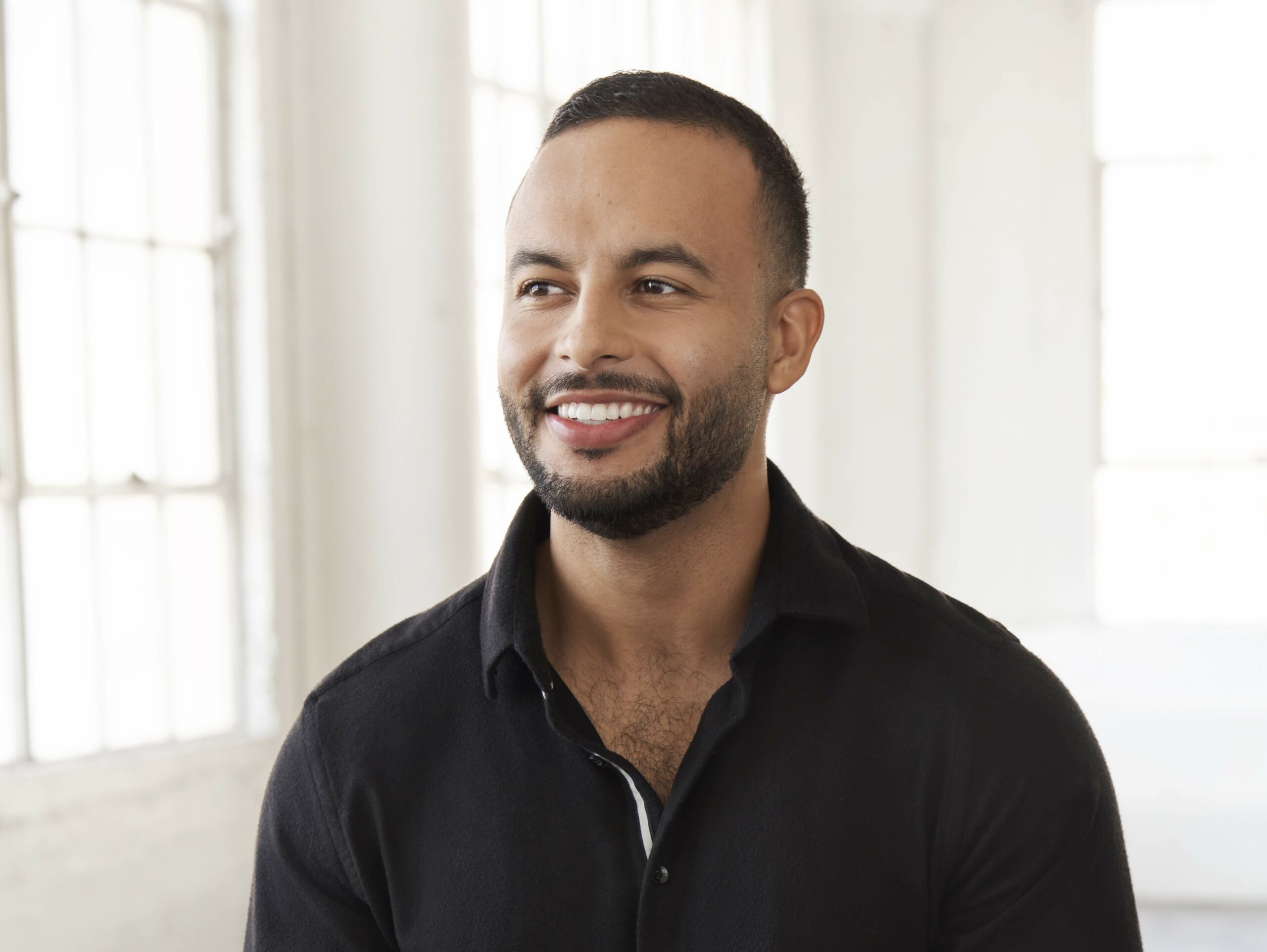
How many people have done the test?
We have tens of thousands of customers to date. We are doing a little science experiment on the population. Remember those questions we ask consumers before they do the test. We look at how they perceive their hair and what their hair is actually like. The majority of consumers that have gone through Strands have a mismatch between the two.
It’s impossible for humans to understand what their hair state is. They go through their entire life, for example, thinking their hair is fine, but it may be medium or thick, and that will bring in a whole new subset of products for medium or thick hair to achieve their optimal hair state.
Let’s give the example of frizz. That’s the top concern that consumers have both on The Hair Lab and Strands sides. If they go to the store, they’re looking for anti-frizz products. They aren’t thinking, because I bleached my hair and have holes in my cuticles, I will need this specific product for frizz. There are completely different sets of ingredients they need, but they have no clue going into the store that that’s the case. They can pick up a frizz product and think it didn’t work, but of course it didn’t work.
It seems like beauty product customization based on quizzes has been primarily a marketing tactic. Do you think that’s the case?
It is in its current state. That was the whole reason behind Strands. We realized people were adopting this idea of personalization, but doing it in a 1.5 way. It’s not the full 2.0 version.
It’s self-prescriptive. You are not informing anyway with new ideas about what their hair state is. You are just taking information about them and giving them a relatively subpar product in return. You are not giving the consumer a product that their hair truly needs biologically. The input into these systems is subjective, so the output can’t be a true match to the consumers’ hair needs. They are starting with incorrect data.
Did you expect Walmart to contact you?
Not at all. We thought it was a fake DM in the beginning. We were like, OK, Walmart, the biggest retailer in the world, is DMing us on Instagram to set up a meeting, that doesn’t happen. Then, they sent us an email, and we researched the person it was coming from on LinkedIn, and they actually worked at Walmart.
They wanted to put our test kits on shelf at first, so our $40 to $50 bundle. We had a visceral rection to that because we didn’t think they are designed for retail. We knew a Walmart shopper going to a store who’s out of shampoo or conditioner has a shopping list, and they want to leave with that kind of product. They don’t want to buy a test kit and take it back home with them to do. But they had seen good gifting from genetic test kids, and that’s why they reached out to us.
And they loved the idea of personalization. They shared with us that there aren’t many companies that do true customization. They had surveyed the landscape quite extensively. They liked the approach we were taking where we were actually testing consumers’ hair. And they wondered if there was a way to bring that to life in the store if it wasn’t with the Strands brand.
We sat down with them over a multiple-month period to figure out, how do we translate testing in the store? The time that a consumer spends in the haircare aisle is two minutes. This is a two- to three-day process. How can we get this done in two minutes? Also, we have 4,000 iterations of shampoo and conditioner. We can’t take up a whole aisle with those.
So, we thought about how we did this in the lab, where we have a portfolio of different mixes that we add in specific amounts to each bottle. That created the idea of a basing and dosing system. Your bases are your shampoo and conditioner.
We have three base shampoos, which are all based on the condition of your scalp. They are dry, normal and oily. We have three base conditioners that are based on hair texture, so fine, medium and course hair. We have 10 precision doses that are for the 10 most common consumer issues in the mass haircare market, so think about anti-frizz, color protection, heat protection, anti-breakage, shine boost, moisture boost. You can add three doses.
We spent around a year developing this product line from July 2021 to July 2022, and we launched into 2,500 doors in August of last year. We spent a lot of time testing the new formulations on our existing Strands customers. We had biological data on individuals with specific kinds of hair, so it was very effective in terms of testing the product formulations to create retail products. We are leveraging that now, too, as we launch new products for The Hair Lab.
How much has The Hair Lab sold?
The Hair Lab is projected to sell above $10 million in retail sales this year. According to Nielsen, we are the No. 2 exclusive haircare brand at Walmart. We’ve learned a ton. This was our first foray into retail. It’s not easy for a small team of 10 people to launch products in 2,500 stores, but it was a relatively flawless launch. We had over a year to prepare with Walmart.
Frankly, we were scared to work with Walmart because we had heard stories of Walmart being hard to work with, and we didn’t have that experience at all. They were willing to work with us. They created their incubator to understand small business needs, and we were the first brand to launch out of that.
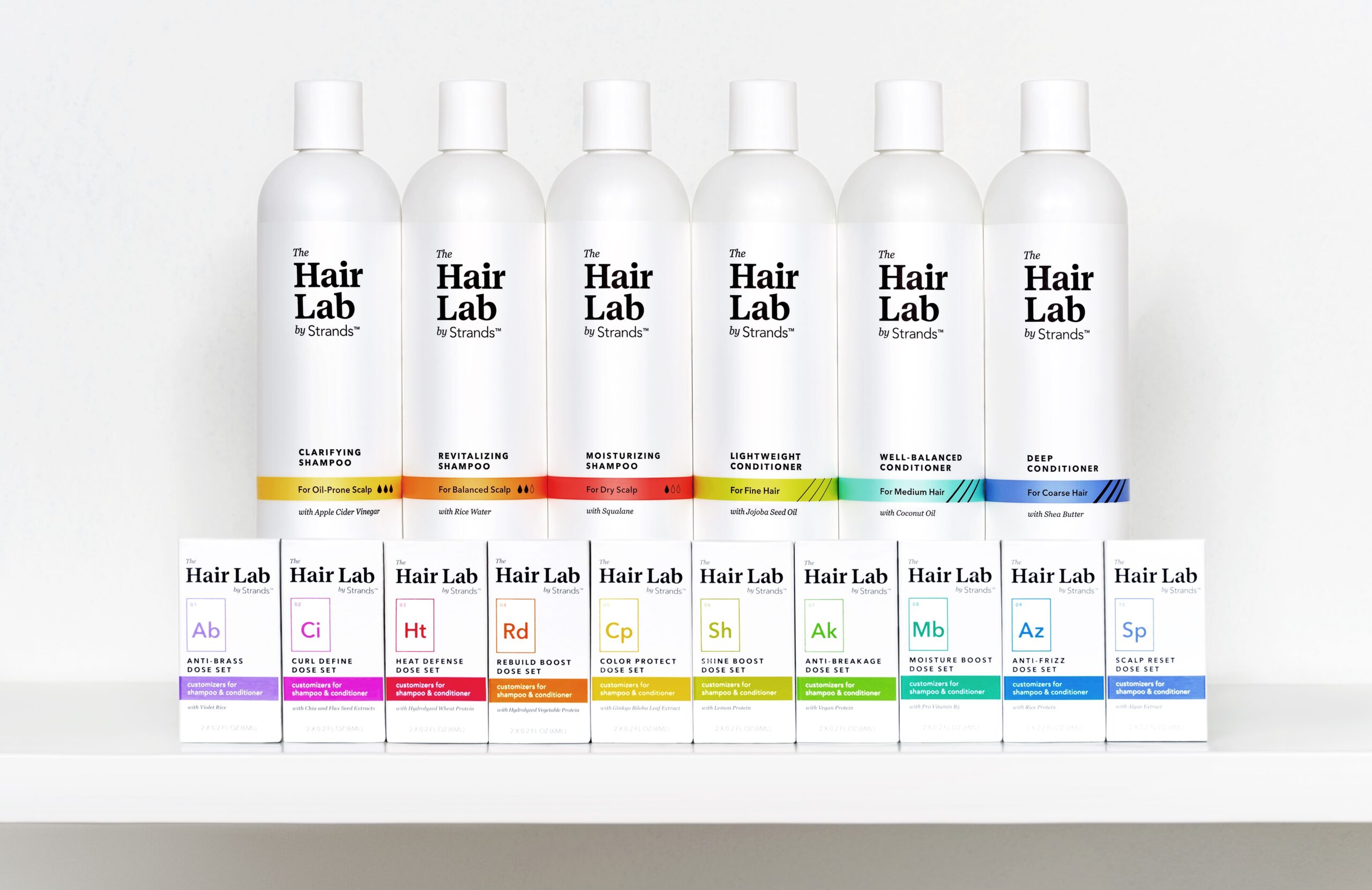
Based on your experience at Walmart, what would you tell other retailers about working with emerging brands?
No. 1 is access to customer information and data. They are not going to give you full access, but it’s important to have data in terms of identifying trends. Walmart told us the top concerns of their customers that could be translated into our doses—and that’s huge coming from a retailer like Walmart.
And they gave us guidance on prices. The Strands brand is $25 to $28 for 8-oz. bottles. It’s very much a prestige brand. For The Hair Lab, we went through a whole pricing study that translated to an $8.94 price. It’s not that people won’t pay more, it’s about the size of the market we are going after in Walmart.
There was no data point to share from Walmart in terms of the $2.94 doses. People are adding three doses, and it’s a complex pricing equation that you need to come up with to think about, how many people will buy three doses, and how effective is the system at the price point if people are buying one dose versus three?
What are shoppers buying at Walmart from The Hair Lab?
Our Clarifying Shampoo, which is for oily scalp, is our No. 1 SKU. Our Deep Conditioner performs very well. It’s designed for course hair and individuals who need ingredients with a heavier molecular weight like shea butter. In terms of our doses, anti-frizz is one of the top ones, and moisture boost is also up there.
One of the trends we have seen with Walmart shoppers that we didn’t predict is they will go to the aisle, look at our product lineup and do a value equation in their head. They say, “OK, I could go buy this anti-frizz product for $9 and then buy an anti-brass conditioner for another $9 and a leave-in conditioner for $6 or I could go buy these customized products with all those benefits and more.”
If you get one shampoo, one conditioner and three doses, which is what we are seeing people buy, that’s $26.70, and they are getting double the benefits. That’s very powerful to the mass shopper.
Are shoppers interested in learning about their hair and customization?
We offer in-store testing through scanning technology we do with a partner. We have an online diagnostic that is linked to the biological hair database at Strands. It’s not the same quiz you would get with competitor brands. We are getting around 30,000 completions of these in-store diagnostics per month, which is huge for us. A lot of robust data comes out of that.
Also, around 70% of those who complete a diagnostic immediately purchase all five products that they’re recommended. The people we are winning over are actually doing the entire system of test, learn and customize. People understand that they guess when they are picking up haircare, and they want a solution to give them something better.
What’s been successful for you on TikTok?
We tested a lot when we first launched. It was really a challenge to understand how to convert online traffic to actual in-store sales. I’ve spoken to many other founders in the space, and no one has a concrete answer for how to do that. We thought, we are a science-focused brand, so let’s tell the story of the science. The most effective thing in doing that has been PR and telling our story to the industry and consumers in a long-format way.
On TikTok, we spent a lot of money on the wrong creators early on with The Hair Lab. We went to typical LA, New York and San Francisco creators that a lot of brands go to. They worked for us for Strands, but they weren’t getting to the Walmart audience. We really had to experiment and formulate a new target persona. The C.J. video went viral because she took a complex idea and broke it down to simple and fun messaging. When she called our precision dosing hair crack, it wasn’t exactly a PC way to talk about it, but it worked.
We started to build a new hypothesis around who the Walmart shopper is and work with new influencers that are Walmart shoppers. We have been able to get them into a program, and they are very supportive. They tell our story in a way we wouldn’t know how to tell it. It’s made a substantial impact on our business. It’s the first time we have been able to translate influencer content into in-store traffic and sales.
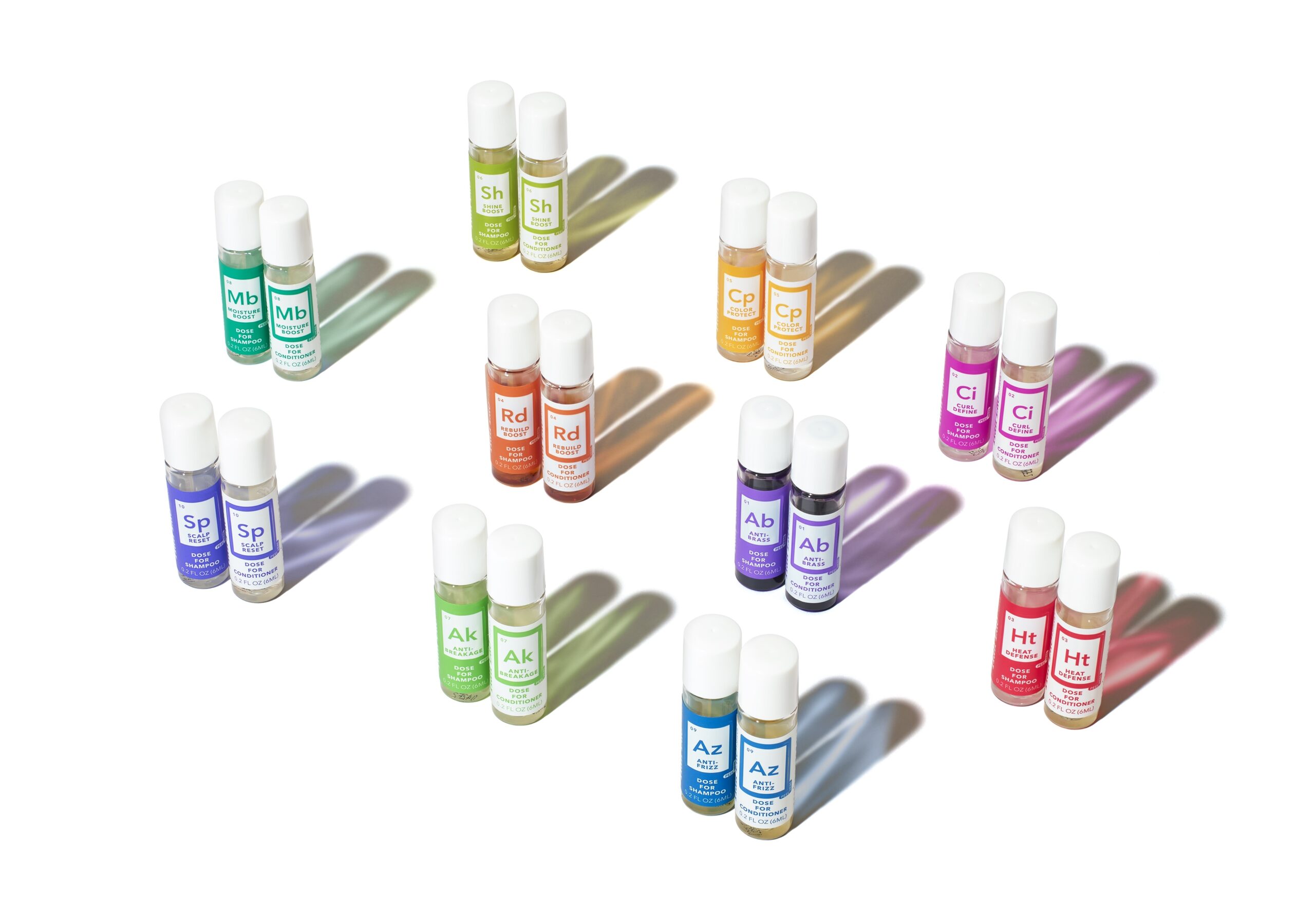
What are short- and long-term goals for your business?
We are really focused on The Hair Lab right now and growing it into a full product line. We want to dive more into the scalp because we have license to do that from the analysis we do, and we want to expand into styling. Those products take a longer time, which is why we selectively brought on investors. We want to do a lot of R&D and testing on our existing beta group to prove efficacy before we launch them. If you build a product that’s used once, you are never going to build a sustainable business.
We did another capital raise right before our launch, which was $5 million from venture capital investors. That brought our total amount raised to $8.4 million. That’s been very helpful for inventory purchases. This is a big bet for us and for Walmart. In the future, we will be raising additional capital to support launches.
When we were going for our fundraise in late 2021, early 2022, we are getting a lot of feedback that, “We love the concept, we just don’t know if Walmart is the right retailer to launch it in.” That was our bet, and it’s paid off. If we, Bubble and a few other players do very well with Walmart launches, that could change the perspective on new businesses launching at Walmart. It’s reasonable for them to be skeptical, but Walmart is changing, and you can make it a success.
Where do you see your business in five years?
We want to be in over 10,000 doors in the U.S. in less than five years. We think there’s a huge amount of room to grow this idea of true customization for both brands within the salon space, within direct-to-consumer and within retail.
We also do see players effectively scaling the customization model in other verticals like skin and body, and I would not write us off there in terms of an approach that’s an evolution from a quiz to a test, learn and customize model. We can draw from haircare and bring it to other categories. Skin is a larger market than hair. Body is smaller, but there are fewer players that take this approach. With the right partners, we could explore these verticals as well.

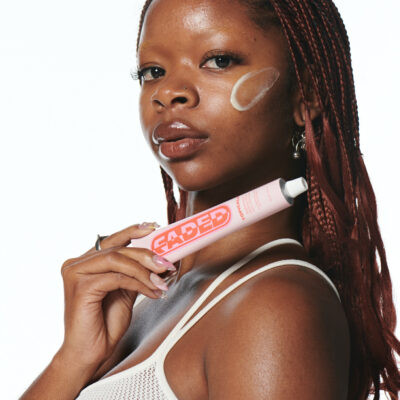
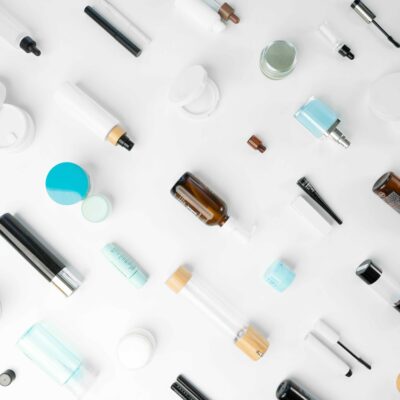
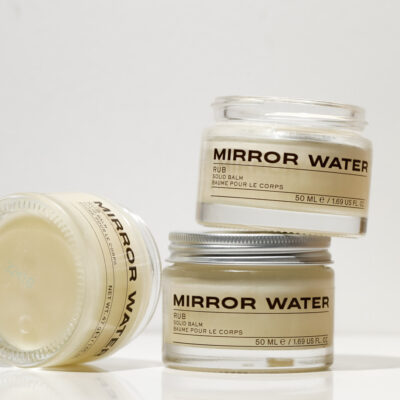
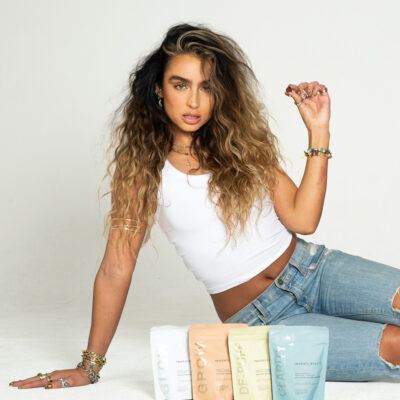
Leave a Reply
You must be logged in to post a comment.